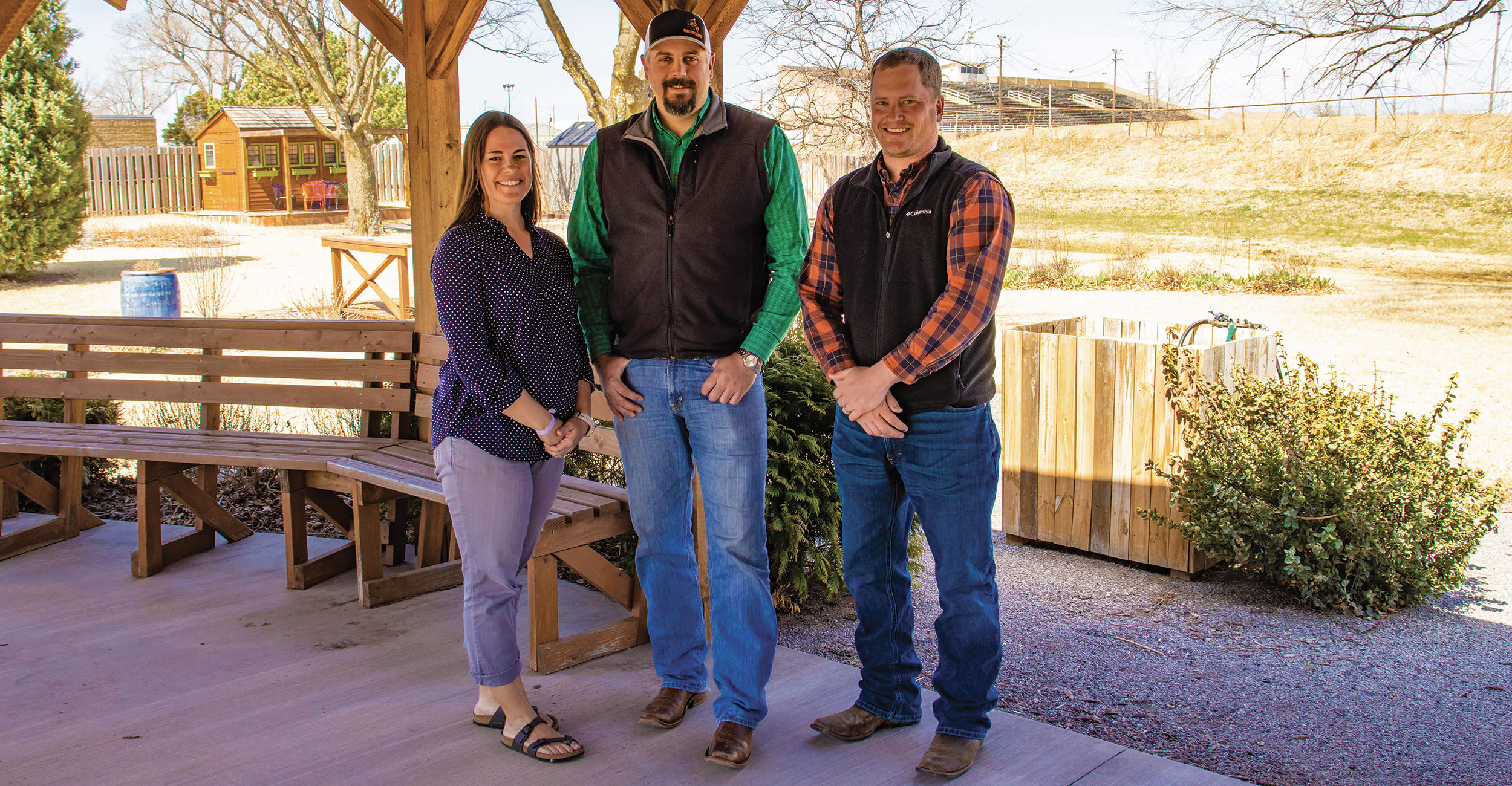
Behind The Audio
Friday, May 27, 2022
Media Contact: Jami Mattox | Agricultural Communications Services | 405-744-8061 | jami.mattox@okstate.edu
A microphone plugs in, a recording light comes on, and a group of people begin to talk.
This is typically how a podcast might begin, right?
Production of the “Extension Experience” podcast is similar to these concepts, but to understand this podcast, one must start with an in-depth look from the beginning.
In 2014, Trent Milacek, area agricultural economics specialist in Oklahoma State University Extension, received questions about possible programming about agricultural topics that clientele could listen to from their phones rather than traveling to a conference. A podcast came to mind, Milacek said.
“We had an understanding that successful podcasts had good quality, so we all knew we could easily get cheap microphones or even just use our smartphones to put the audio together to make a podcast,” said Josh Bushong, OSU Extension area specialist in agronomy. “But, we knew if we were going to do it, we were going to do it right.”
Milacek, Bushong and Dana Zook, area livestock specialist for OSU Extension, worked on the programming concept and finding funding for the equipment for the podcast, Milacek said. Support from OSU Extension administration aided in initial funding for equipment, such as microphones, to start the podcast, Bushong said.
When purchasing the equipment, the total cost was $1,855.76 for the recording deck, cables, stands and mics. Equipment was purchased so four people could be on the podcast at once, he added.
The concept of the podcast was to have something other than traditional programming, Zook said. This medium was another way to reach people rather than through workshops, she said.
Podcast episodes are 15 to 30 minutes in length to keep the listener engaged in the episode, Milacek said. Topics span from general agricultural issues to event opportunities for producers, he added.
“Some of the first podcasts that we did were just very general topics,” Zook said. “After a while, we figured out we could be more specific.”
The topics vary depending on the time of year and what things are happing in agriculture, Bushong said. In the spring, it may be about winter wheat varieties, for example.
Each host has a different specialty, but depending on the season, each may be responsible for researching other areas, he said. Events or time-sensitive topics can push other subjects to a later date, Bushong added.
Getting the facts behind a topic and keeping it relevant is crucial, Zook said. Creating an outline about what they plan to talk about helps the flow of the podcast, Zook added, but the recordings are not scripted.
“A lot of what they do in the ‘Extension Experience’ podcast is a real-time thing,” said Karen Eifert Jones, podcast listener. “For me, it’s like listening to a newscast, a little timelier at presenting what we should be thinking about as producers.”
Much of the podcast content comes from fact sheets. That information helps the group prepare to discuss the topic, Zook said.
One of the goals of the podcast is to start a conversation between those who want to learn and those with the information to teach, Bushong said.
Being able to keep things brief, the group can talk about issues but still make it easier to talk to one another and provide a steady flow the audience can follow, he added.
By getting the conversation started, hopefully people will ask questions and bring it up to an industry leader or extension educator, Bushong said.
The main audience of the podcast has been producers as well as chemical or seed company employees who share the podcast, Bushong said. Even some people who are not involved in the agricultural industry have found and listen to the podcast, Bushong said.
“We try to keep it to where someone who has no experience with what we are talking about can enjoy it,” he said.
A lot of work goes into producing the podcast, Milacek said. The three-person team does the recording, editing and publishing, but the recording location often changes, he added.
OSU Agricultural Communications Services helped the podcast have a home on the OSU website by creating a landing page, logo for the podcast and a place for all episodes from the first episode in 2020 to the present, Milacek said.
“I hope Josh, Dana and Trent continue to produce the podcast,” Jones said. “There is a lot of value in making the research of OSU accessible to farmers where we are, instead of making us come to them.”
Listeners can find the podcast on Apple Podcasts, Google Podcasts, Spotify and other streaming platforms.
“The sky is the limit as far as where we would like to go with the podcast,” Zook said.
Story By: Erick Moreau | Cowboy Journal
